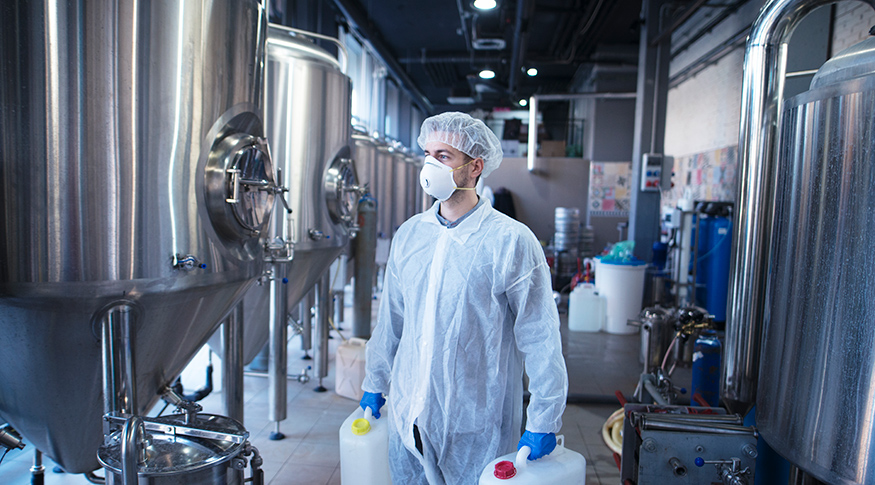IPP
Industrial prices change -0.35% in April
May 30, 2023 09h00 AM | Last Updated: May 30, 2023 11h46 AM

The industrial prices changed -0.35% in April against March. The cumulative index in the year hit -0.99%, the second lowest figure ever registered for April since the beginning of the time series in 2014. The cumulative rate in 12 months stayed at -4.63%, the biggest drop in the time series for this indicator.
Released today (30) by the IBGE, the Producer Price Index (IPP) data show that 12 out of 24 industrial activities investigated by the survey recorded negative changes in April in relation to March.
“The drop of 0.35% was the third one in a row and the eighth one in the last nine months. From August 2022, when the downward path began, up to April this year, the IPP accumulates a reduction of 8.29%,” highlights Murilo Lemos Alvim, an analyst of the survey.
Clique e arraste para zoom
The four most intense changes were: pharmaceuticals (3.97%), pulp and paper (-3.57%), wood (-3.19%) and other chemicals (-2.61%). In the monthly comparison, other chemicals was the most relevant sector of industry in the composition of the aggregate result. This activity was responsible for -0.22 percentage points (p.p) of influence on the change of -0.35% in general industry.
“Having dropped 2.61%, the tenth consecutive negative change, the chemical industry was the activity that mostly influenced the IPP result in April. The three groups released - manufacture of inorganic chemicals, manufacture of resins and elastomers and manufacture of pesticides - dropped. However, manufacture of inorganic chemicals, which includes fertilizers, stood out. That group registered a drop of 6.39% in the comparison between April and March,” analyzes Alvim.
After a period of shortage up to the end of the first semester of 2022, fertilizers are in a scenario that couples exceeding supply with repressed demand, since producers are stocked “The supply of fertilizers in the world market had been impacted by the restrictions of the pandemic and became even more scarce with the war in Ukraine. Brazilian producers managed to reinforce the stocks to avoid a shortage at harvesting time. Prices rose in that period, though less restrictions of the pandemic and the return of exports from European countries increased the supply in the second semester last year, though not followed by the demand. This impacted the chemical sector as a whole,” completes the analyst of the survey.
Having dropped 1.64%, petroleum refining exerted the second biggest influence on the monthly result, as well as it highlighted as one of the major influences on the cumulative index in 12 months, with a reduction of 17.41%.
“We might highlight drops in some derivatives, like diesel fuel and aviation kerosene. Usually not a highlight, biodiesel stood out this month with a reduction due to the drop in the prices of soybean oil, its major raw material. On the other hand, ethyl alcohol rose due to the increase in the prices of sugarcane, whose supply reduced due to weather issues,” analyzes Alvim.
Among the activities that rose, the pharmaceutical sector stood out the most, with an increase of 3.97%. That result was due to the annual adjustment in the prices of medicines by the regulatory agency between March and April. In 2023, it authorized an increase of up to 5.6%.
The sector of pulp and paper was impacted by the drop of the dollar, which hit 3.7% in April in relation to March, the biggest reduction since August 2022, when it had been 4.2%. “A lower dollar impacts a number of sectors based on exportable products. The sector of pulp and paper fell 3.57%, the highest negative figure of the IPP this month. Besides the dollar, pulp devaluated in the foreign market,” says Alvim.
The sector of vehicles recorded the 34th positive change, 0.16%. Even though they are constant, changes have not been very intense. The rise hits 1.29% in the cumulative index in the year and 6.08%, in 12 months. “It rose for nearly three years in a row, which can be justified by an increase of costs. They have been facing a crisis in the semiconductors since the beginning of the pandemic, which impacts on the acquisition of inputs for cars. Yet, the change is not so high in absolute terms and compared with other activities surveyed,” highlights Alvim.
Having reduced 13.12%, the sector of basic metals stands out as one of the biggest influences. The steel sector dropped 11.43% in the last 12 months. Having dropped in the foreign market, aluminum derivatives are another highlight in this sector.
More about the survey
The IPP aims at measuring the average change of sale prices received by the domestic producers of goods and services, as well as their evolution over time, signaling the short-term inflationary trends in Brazil. It is a key indicator for the macroeconomic follow up and, consequently, a valuable analytical instrument for decision makers, either public or private.
The survey investigates, in slightly more than 2,100 enterprises, the prices received by producers, free from tax, tariffs and freight, defined according the most usual commercial practices. Nearly 6 thousand prices are collected monthly. The complete tables with the results are available at Sidra. The next release of the IPP, related to May, will be on June 29.




















